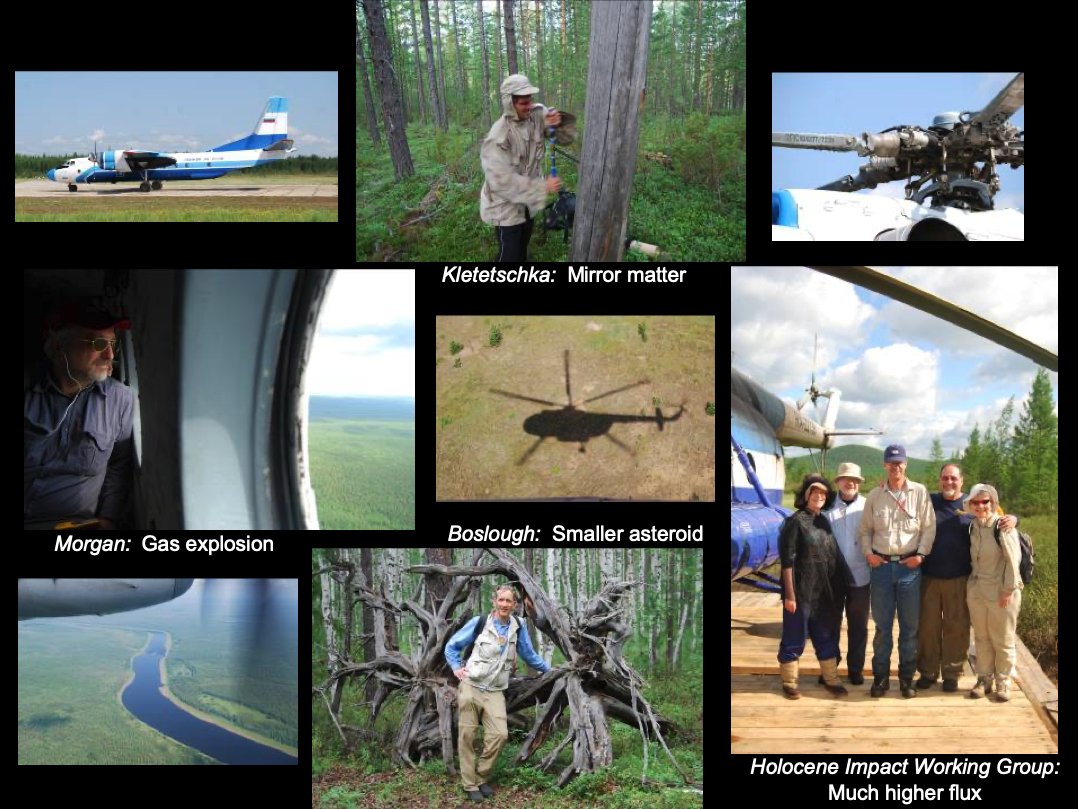
I now turn my attention to the Younger Dryas Boundary Strike #YDBS hypothesis. It’s been called the Younger Dryas Impact Hypothesis #YDIH by many, but that’s a misnomer because Team Comet has never been able to decide if was an impact or an airburst. #TEHburst 

The #YDBS is relevant to the #TEHburst hypothesis because it was conceived and is led by the same team of researchers using the same methods and making the same mistakes. The best segue from my last thread is to discuss a paper by my friend, Gunther Kletetschka.
#YDBS posits that the N American megabeasts of the last ice were abruptly wiped out by an asteroid, comet, swarm of asteroids, or swarm of comets (impacts or airbursts) about 12,800 years ago. It also put an end to the Clovis Culture. It has been thoroughly & repeatedly debunked.
It is relevant to the #TallElHammam because the #TEHburst paper appears to be an effort to resurrect or “re-bunk” the discredited #YDBS. But it makes all the same mistakes. One of the key mistakes is the assumption that the associated sediments are coeval, or of the same age.
In the #YDBS papers, the authors refer to a layer as the Younger Dryas Boundary or YDB layer. In #TEHburst, the authors refer to a “disaster layer.” We know that the so-called “YDB layer” is not coeval & therefore not attributable to a single event.
The assumption that it’s all the same age is a basic error in radiometric dating by the #TEHburst and #YDBS authors. We raised this in a published comment to one of the papers, but it is was explained much better in a recent Twitter thread, unrolled here. threadreaderapp.com/thread/1440473…
Both #TEHburst and #YDBS employ the same logical fallacy: circular reasoning, which effectively goes like this: “At such-and-such a time we see a layer. We know that it all happened at the same time because we use that layer to define the time of the event.”
There's a stratographic layer of micropherules close to sediments that have been dated, or are calculated to be of roughly the right age. That's the YDB layer. The amazing discovery is that there are microspherules in the YDB layer everywhere!
This works when the layer has some unique characteristics, such as the geochemistry of a volcanic ash layer, but researchers must be careful. In this case they have not been careful.
If you’ve seen photos or videos of the Chelyabinsk airburst you know it left a trail of “smoke”. This image from the cover of Physics Today, based on my simulations, shows a cloud which is actually the condensate from ablated asteroid material (rendered by Brad & Andrea Carvey). 

When asteroid vapor condenses, it forms microspherules. Tiny little balls. They can also be formed many other ways: foundries, power plants, & pottery kilns. There are all sorts of anthropogenic sources. Like that scar in the tree at Tunguska, we cannot assume they are natural.
There's also a constant rain of cosmic micropherules from the sky because of a constant rain of meteors, which are a source. Go up on your roof & you can collect them. To complicate matters, the constant rain is episodic, & local layers can form when there is a big local meteor.
At any given location, over time, there will be lots of big local exploding meteors that are too high up to cause damage, but big enough to deposit layers of microspherules. There is no reason to think that layers in distant sediments are coeval, or from the same event.
That brings us to Guther’s paper on the #YDBS, “Cosmic-Impact Event in Lake Sediments from Central Europe Postdates the Laacher See Eruption and Marks Onset of the Younger Dryas” Kletetschka et al., J. Geology 2018 126:6, 561-575. journals.uchicago.edu/doi/abs/10.108…
Based on Gunther’s answers to my email questions last summer, here’s what I shared with colleagues: “the YDB is defined by the presence of microspherules. More significantly, if the MSPs hadn't been there, they would not have concluded that it was the YDB.”
It's my understanding that the YDB is defined this way in Team Comet's #YDBS papers. I’m willing to be corrected if I’m wrong. Many of the papers are ambiguous on this matter. I welcome clarification from authors of those papers who are on Twitter.
This a good point to take a break before I enter into a thorough discussion of the #YDBS. I will try to do that tomorrow so I can wrap up.
There is so much more to talk about that I'm not close to wrapping up. My next thread talks about the so-called Comet Research Group, and the subset I'm now calling "Team Comet." Follow this link to continue:
https://twitter.com/MarkBoslough/status/1441799634385469450?s=20
• • •
Missing some Tweet in this thread? You can try to
force a refresh














